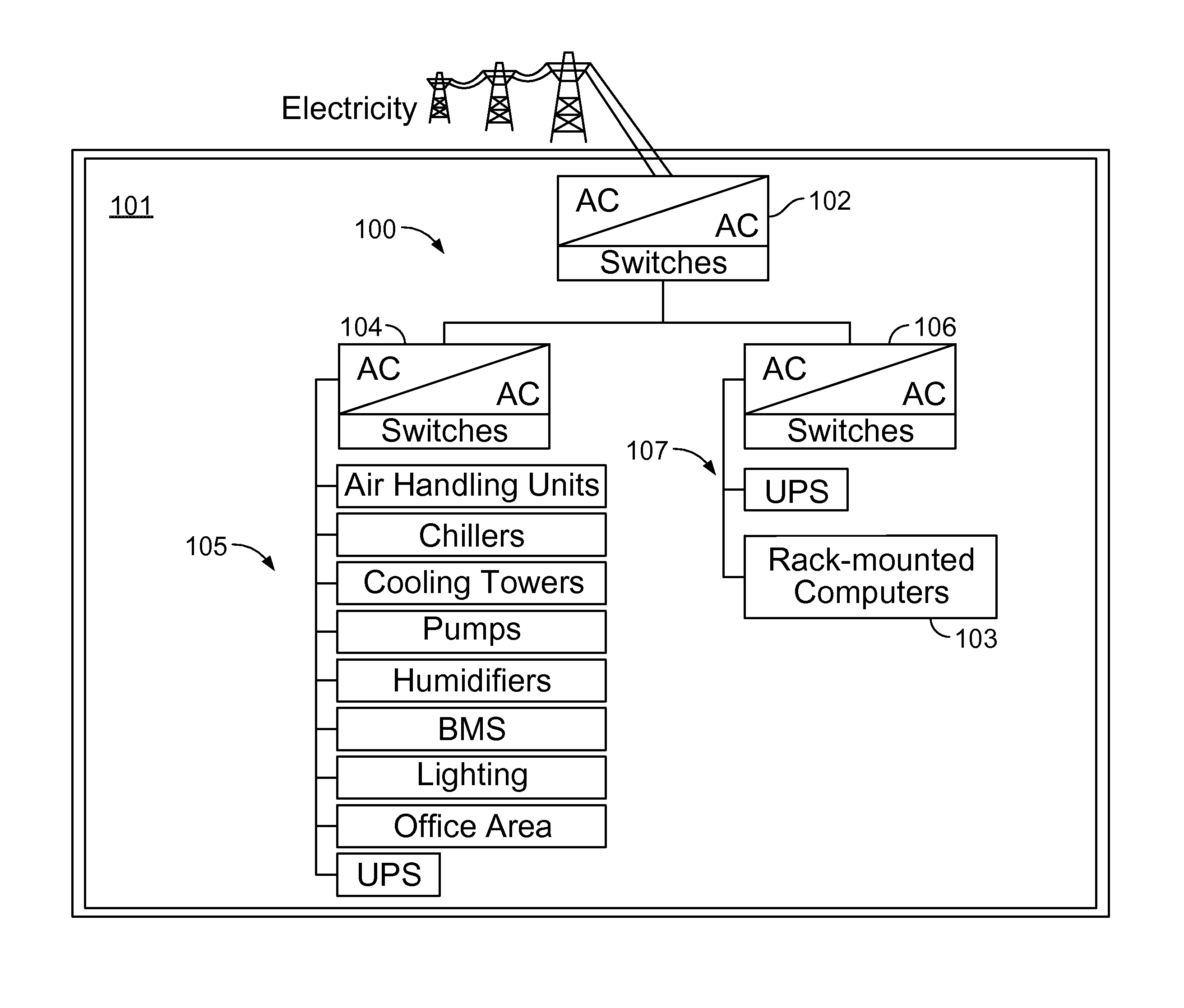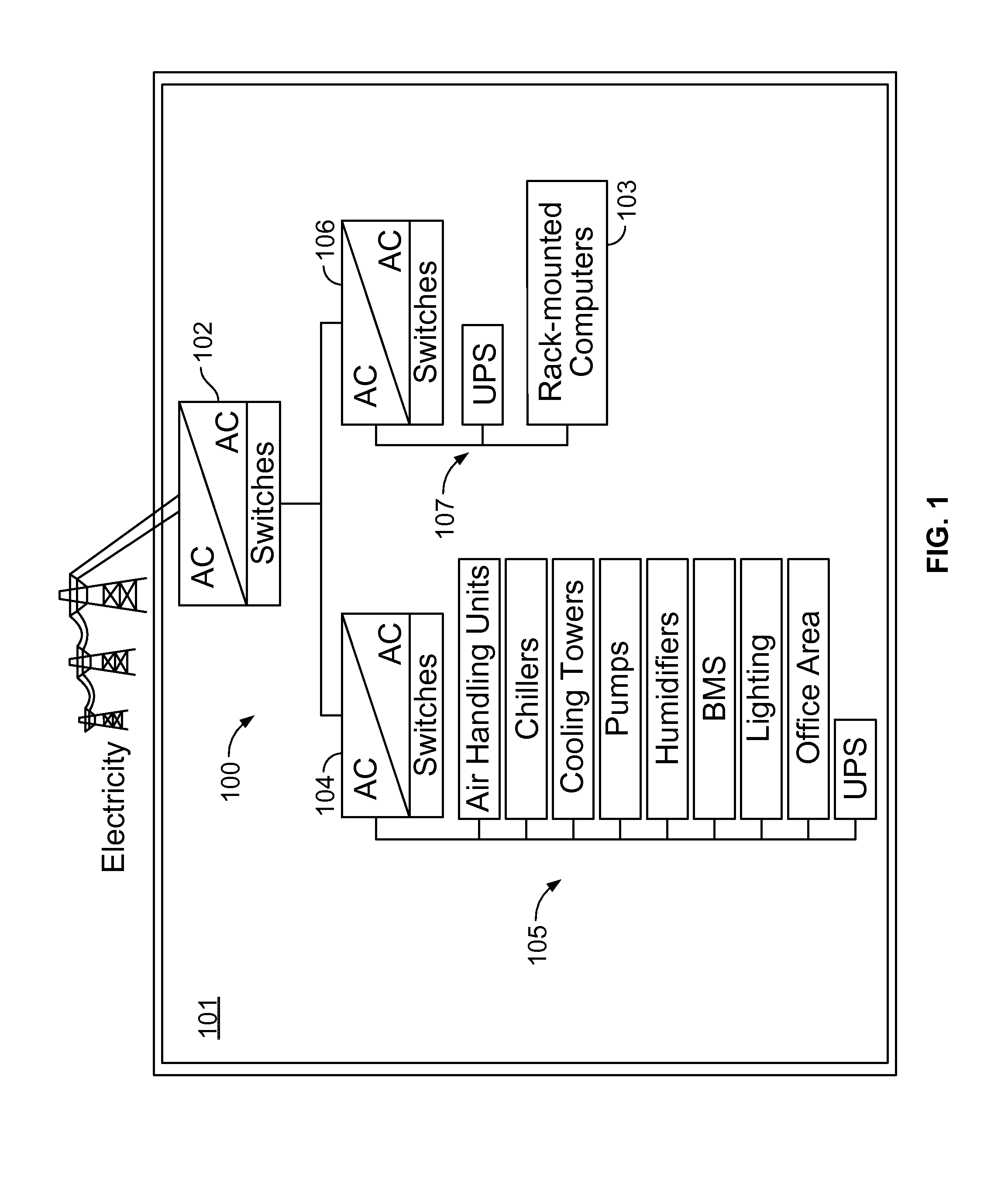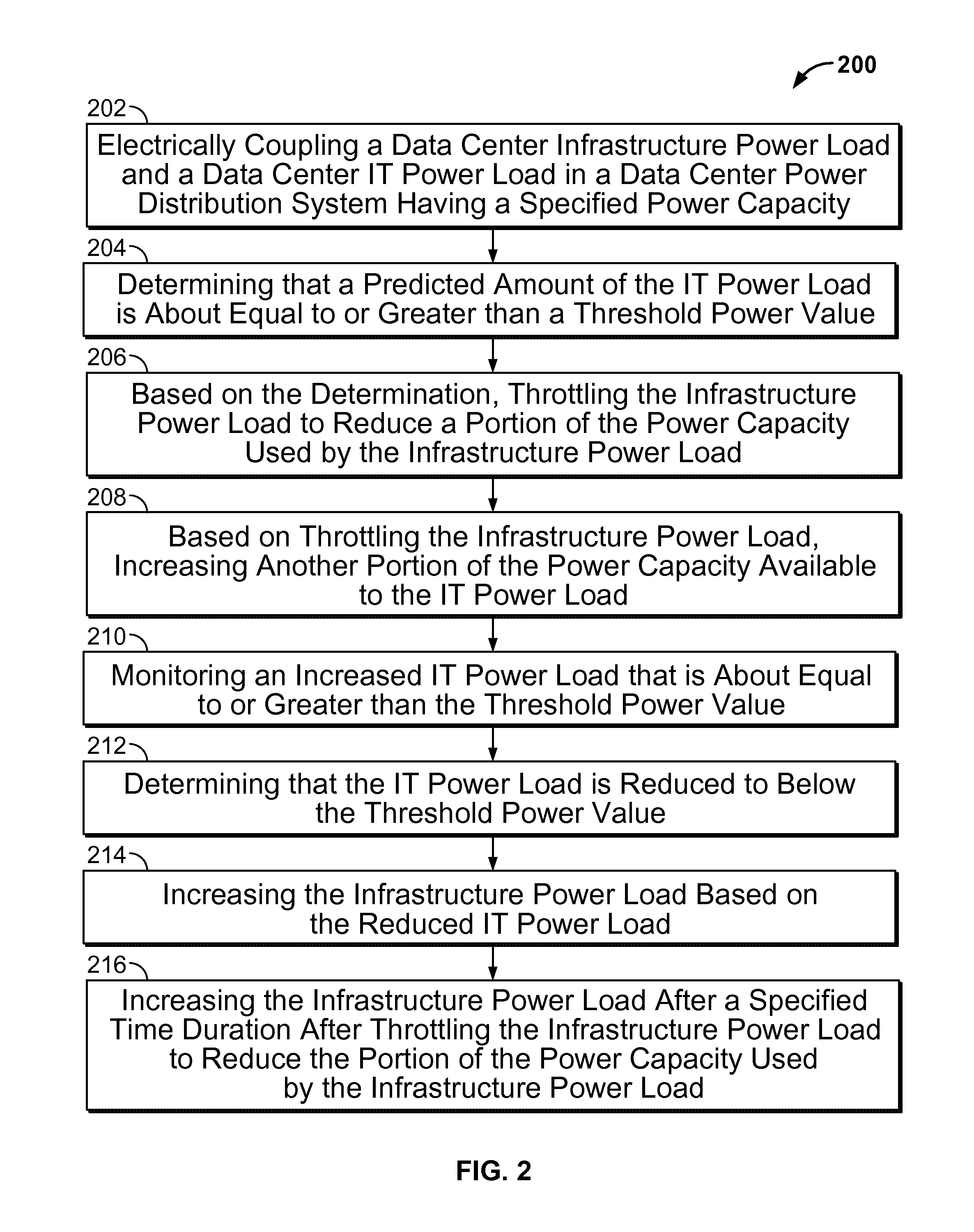Managing power between data center loads
a data center and load technology, applied in the field of system and method for managing power between data center loads, can solve the problems of increasing the cost of power consumption, consuming more energy, and reducing the efficiency of data center operations, so as to reduce the amount of power, increase the productivity of data center, and reduce the effect of performance level
- Summary
- Abstract
- Description
- Claims
- Application Information
AI Technical Summary
Benefits of technology
Problems solved by technology
Method used
Image
Examples
Embodiment Construction
[0035]A power distribution system of a data center operating at a specified power capacity may be used for managing power loads of the data center. Managing power loads of the data center may include electrically coupling a data center infrastructure power load and an information technology (IT) power load in the power distribution system and determining that a predicted amount of the IT power load is about equal to or greater than a threshold power value. Managing power loads of the data center may further include, based on such determination, throttling the infrastructure power load to reduce a portion of the power capacity used by the infrastructure power load, and based on such throttling, increasing another portion of the power capacity available to the IT power load.
[0036]FIG. 1 illustrates a schematic diagram showing a power distribution system 100 for powering a computer data center 101. The computer data center 101 is a building (e.g., modular, built-up, container-based, or...
PUM
 Login to View More
Login to View More Abstract
Description
Claims
Application Information
 Login to View More
Login to View More - R&D
- Intellectual Property
- Life Sciences
- Materials
- Tech Scout
- Unparalleled Data Quality
- Higher Quality Content
- 60% Fewer Hallucinations
Browse by: Latest US Patents, China's latest patents, Technical Efficacy Thesaurus, Application Domain, Technology Topic, Popular Technical Reports.
© 2025 PatSnap. All rights reserved.Legal|Privacy policy|Modern Slavery Act Transparency Statement|Sitemap|About US| Contact US: help@patsnap.com



